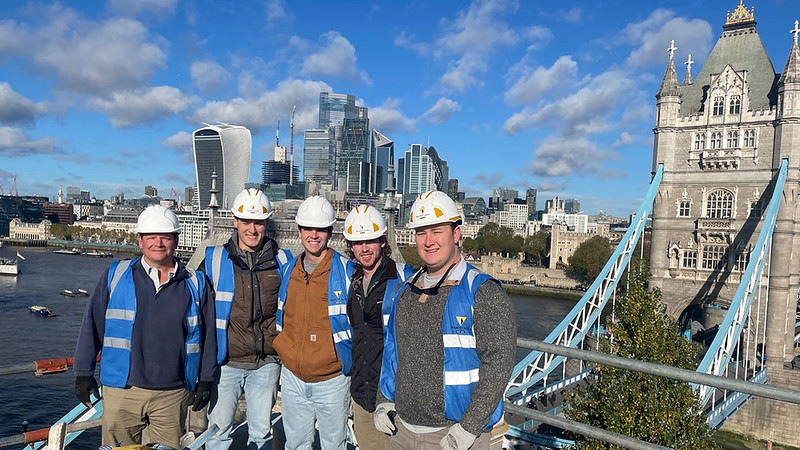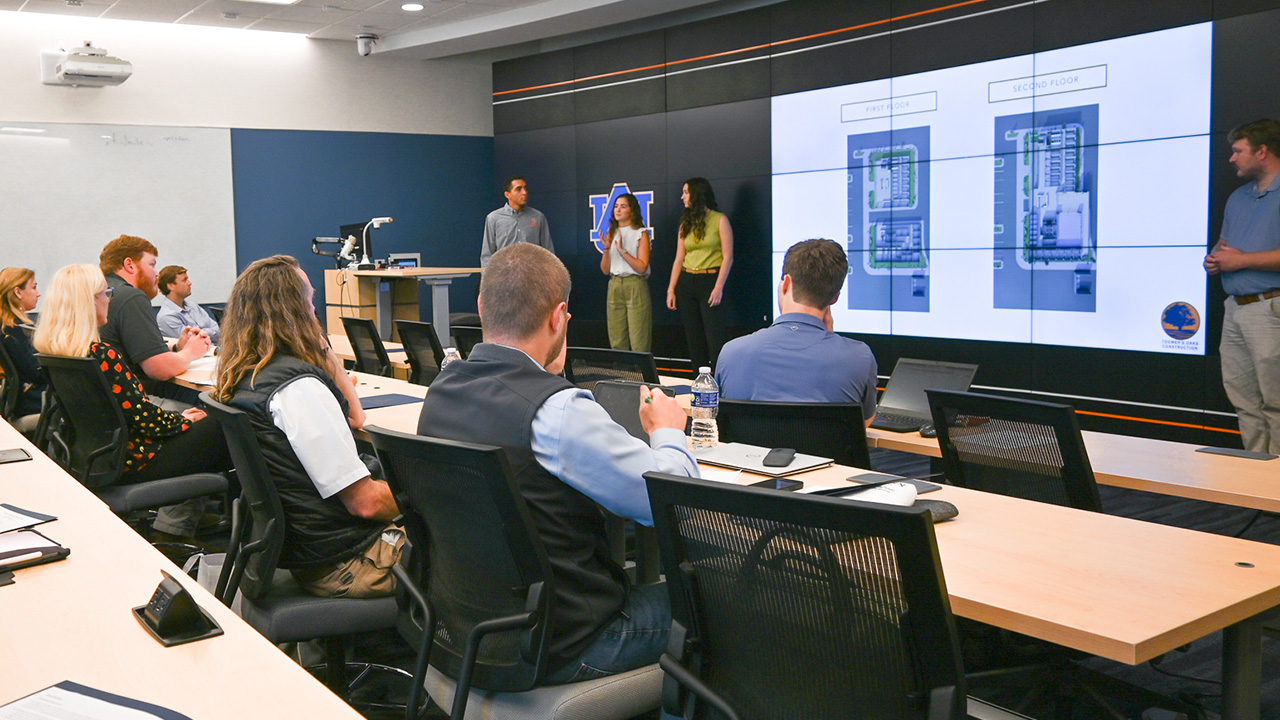content body
Building science major Kameron Matthews never thought he would be creating construction plans for a prosciutto factory, but that’s exactly what he found himself doing at an Associated Schools of Construction competition this past fall. And not only did his team create a plan, but they created the one that won the competition.
“We visited a meat processing facility in Opelika about three weeks before the competition, so we went in with an understanding of the industry, and we knew so many buzz words,” he said. “The judges were like, ‘This is amazing,’ and they even asked if one of us worked in the meat processing industry.”
It’s that type of preparation and drive that have made the competition teams in Auburn’s McWhorter School of Building Science so successful.
“One difference between us and other schools is we don’t have to recruit students,” said Paul Holley, a professor and competition team coach. “We have kids who want to go compete. They don’t mind the extra work they have to do to learn things they don’t know before competition, and they have a great work ethic and great communication skills.”

Since they arrived in England several days before the competition began, the students traveled into London to see a similar project, and the knowledge gained from that site visit helped them produce the winning proposal in their category.
Collegiate building science competitions are usually held over a span of several days. Sometimes teams can do research in the weeks beforehand, but other times they go in blind. When it comes time for the actual competition, there are usually one or two days of intense work under a strict time limit before each team submits a lengthy document outlining their proposed solutions to the challenge and gives a presentation to judges.
The most common competition category across domestic and international competition is “Commercial,” in which teams study a proposed construction project and produce a schedule, budget, logistics and safety plan. Projects can include a wide range of building types, from office and retail to hospitals and higher education. Other categories are structured similarly but have a more specific focus that could include civil engineering, electrical or concrete.
There is also a “Design-Build” category that requires the submission of schematic designs along with the construction documents. Auburn’s design-build teams always include at least one architecture student from the School of Architecture, Planning and Landscape Architecture to help with the design aspect.
Holley and Associate Professor Alan Bugg were among several faculty members who recently took Auburn students to the United Kingdom to compete on the campus of Liverpool John Moores University. Bugg’s students were challenged to develop a plan for interior and exterior renovations to an academic building on campus. Holley’s team was assigned to create plans for an addition, repairs and renovations on a 180-year-old hydraulic station in town that had been bombed during World War II.
Since they arrived in England several days before the competition began, Holley was able to take his students into London to see a similar project, and the knowledge gained from that site visit helped them produce the winning proposal in their category.

In construction management competitions, there are usually one or two days of intense work under a strict time limit before each team submits a lengthy document outlining their proposed solutions.
“We have excellent resources, like our industry relationships and a dedicated space on campus for competition preparation,” said Holley. “Being able to travel a day or two early to better understand project context and international codes, currency and metrics is also a great resource.”
In addition to three first-place wins and a second-place finish in England, Auburn’s teams also earned multiple first-place finishes and “best presentation” awards at Associated Schools of Construction competitions in Peachtree City, Georgia, and Chicago.
Since the competitions are designed to simulate industry, students who compete are well-prepared to start their careers after graduation. Matthews noticed the work he did at his last internship was almost identical to what he has produced during competitions.
“Detail for detail, it was the exact same thing,” he said. “Competition is invaluable. It’s the reflection and repetition of all the skills you’ve learned in class here, and they just keep building.”
Auburn’s building science program includes multiple opportunities for students to improve their public speaking and presentation skills, which helps teams when presenting their work to judges after the stress of working in a time crunch.
But beyond their competition experience and presentation skills, it’s the students’ passion for learning and competing that has made them so successful. Student Grace Herazy is currently forming an all-female team for spring competition in the Concrete category, and her enthusiasm for competing is evident.
“We may not be experts in concrete, but we know about competitions,” she said. “And I can learn more about concrete.”
Want to learn more about competitions and other amazing student experiences in the McWhorter School of Building Science?
Read more




